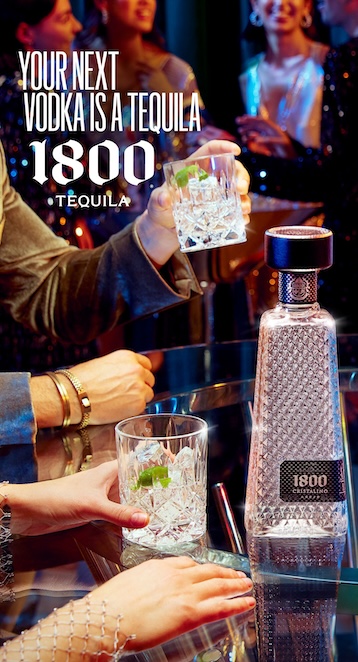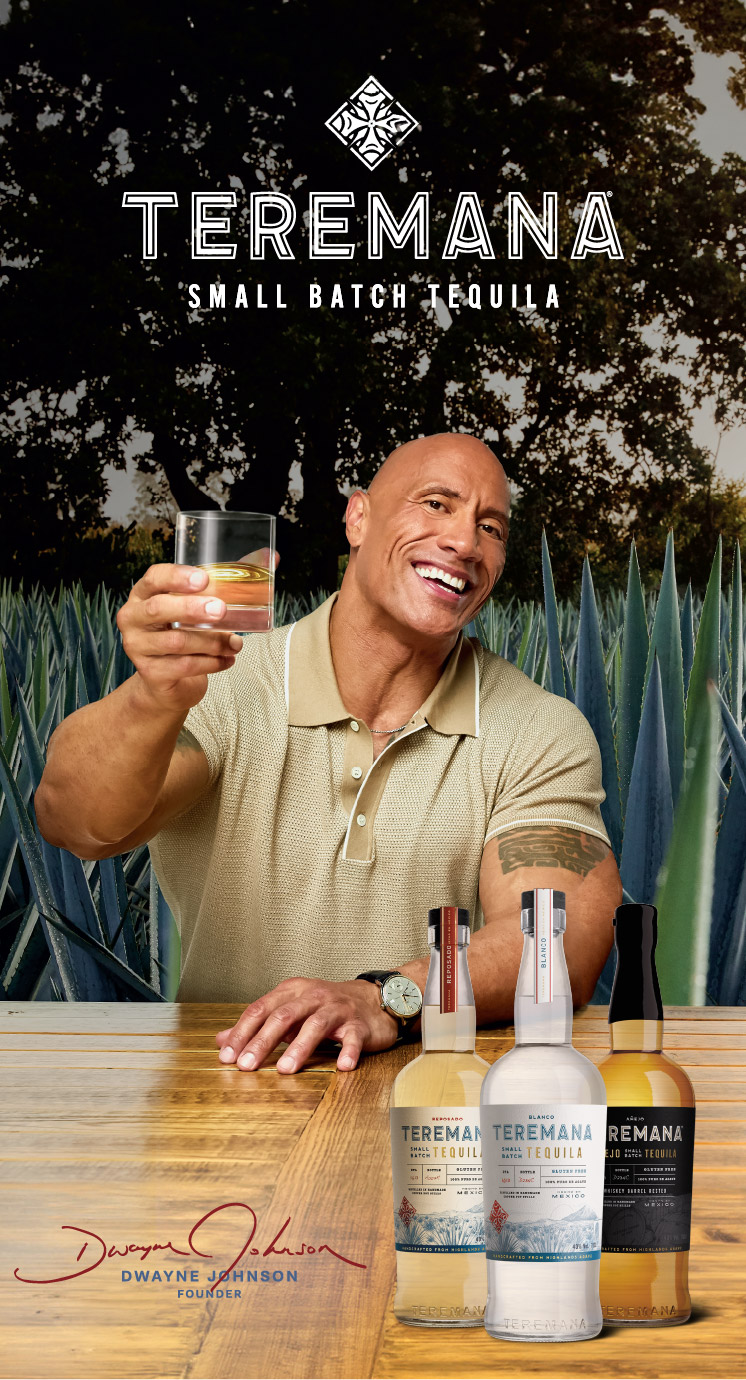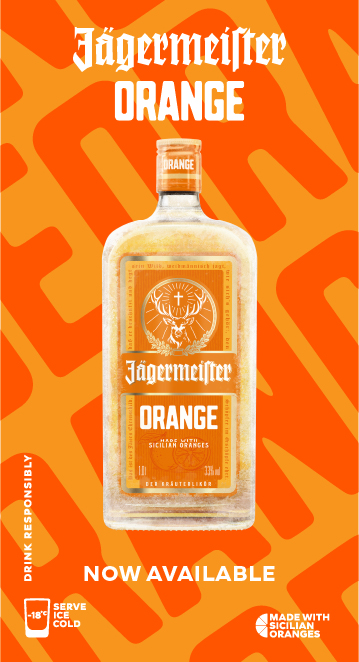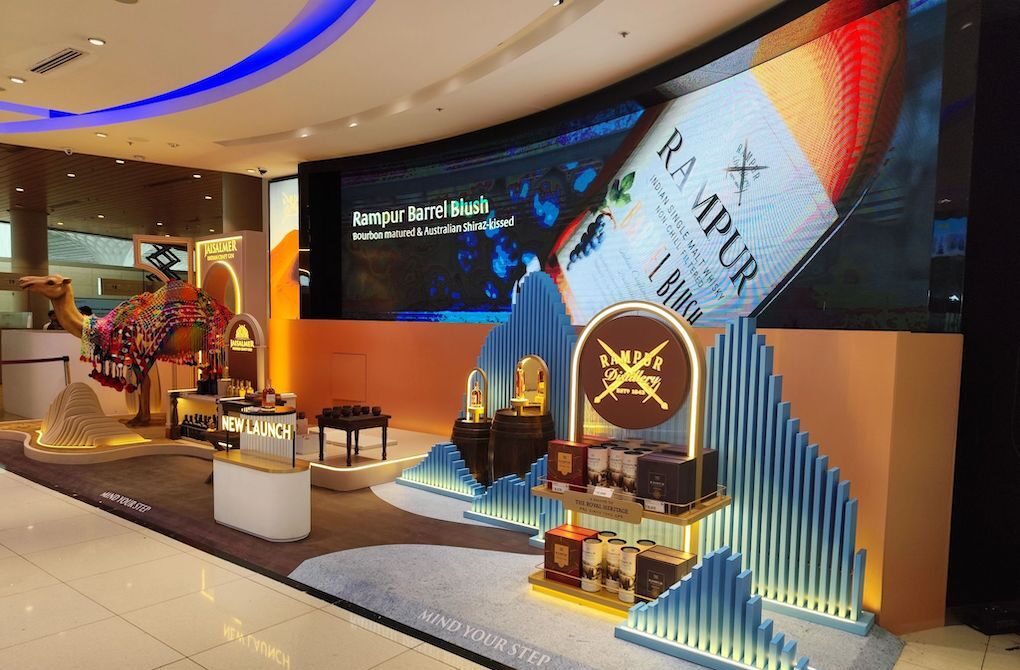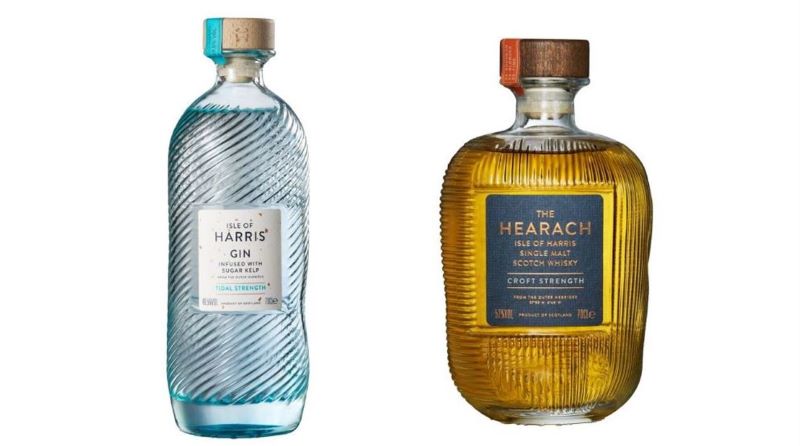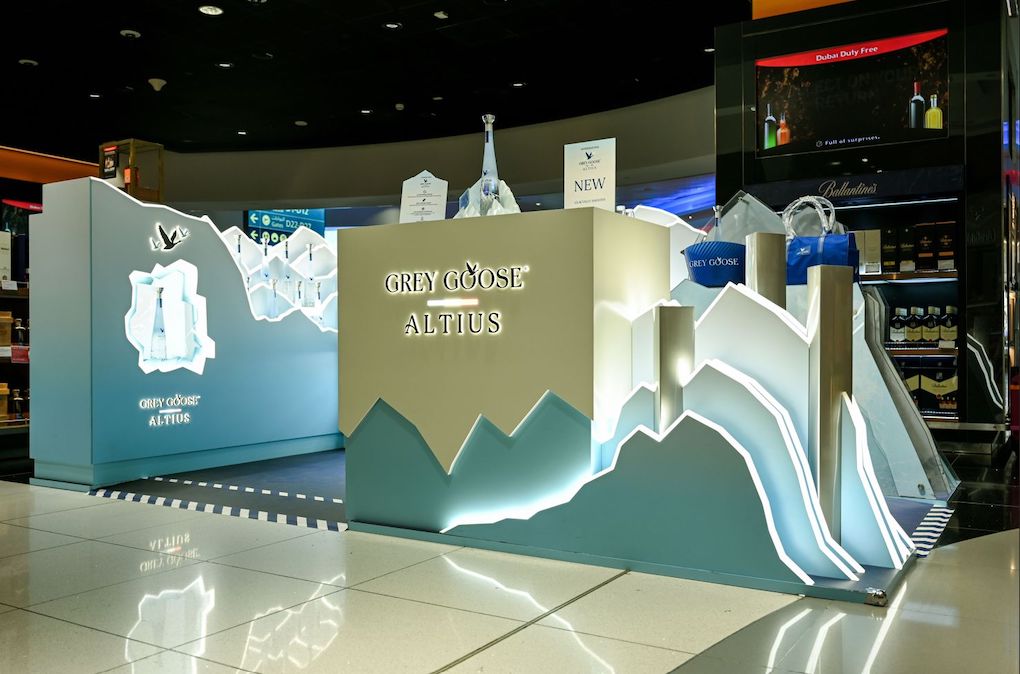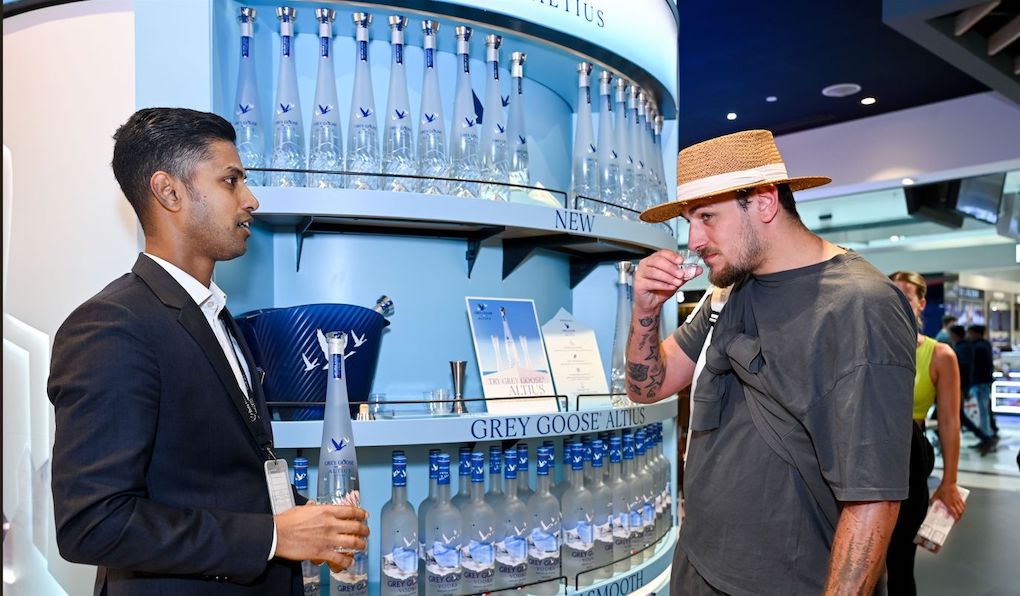Four Pillars gin is a very modern Australian brand. Launched in 2013 from its distillery in the Yarra Valley, the brand has tapped into the surging interest in craft products and the cocktail culture in its home market, and uses many botanicals and other produce that come from and reflect Australia.
In that short time it has become the biggest-selling craft spirit in Australia, with distribution in 20 markets worldwide. Travel retail has played its part in the brand’s rapid emergence, and is now fast becoming a key channel. As reported, Four Pillars has joined brand representative Duty Free Global’s portfolio in a bid to build its position in the channel.
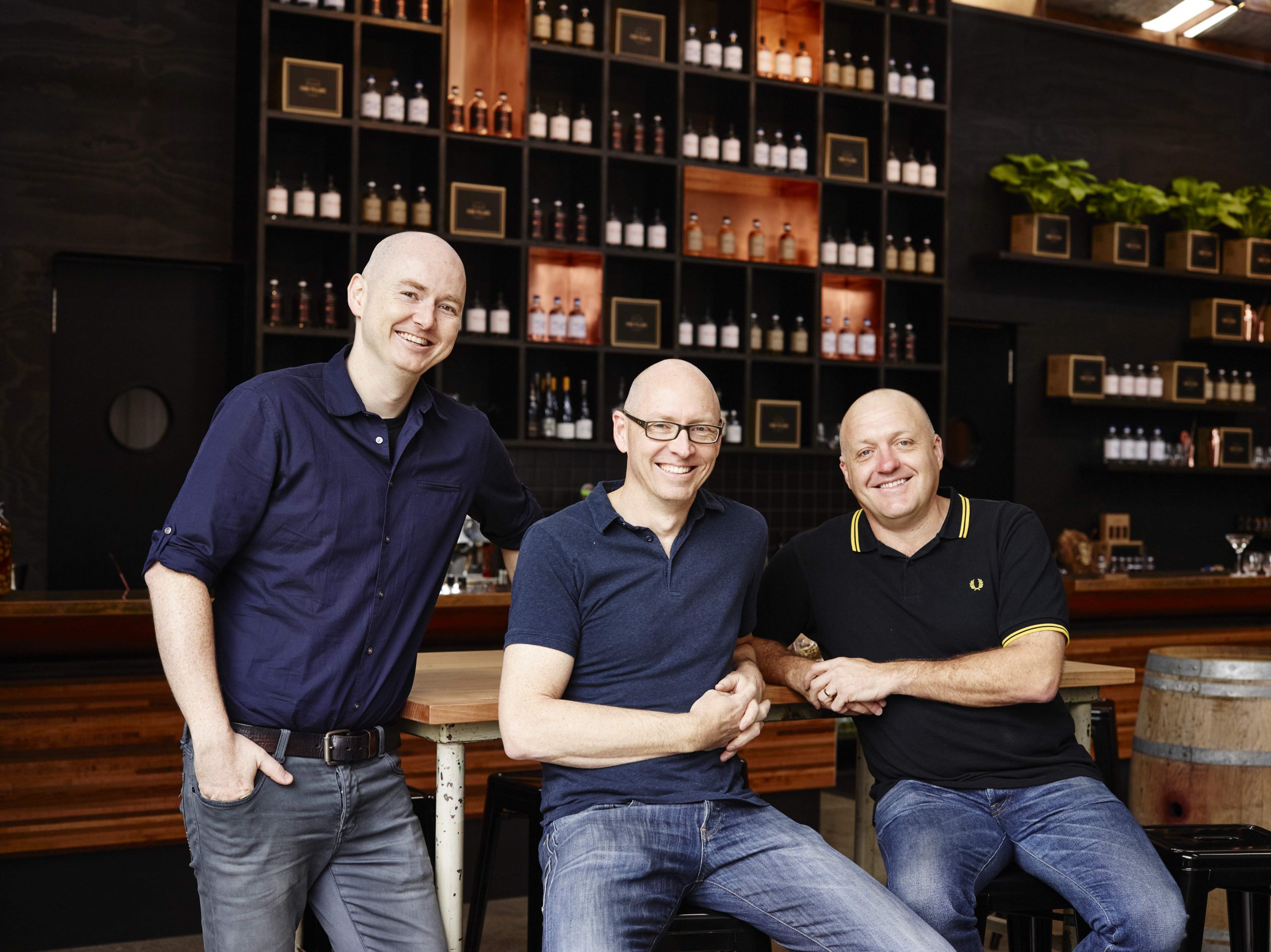
Today, Four Pillars is the number one Australian gin brand sold in Heinemann Tax & Duty Free at Sydney Airport, Dufry at Melbourne Airport, Lagardère Travel Retail at Adelaide and Gold Coast and JR/Duty Free at Brisbane and Perth airports. It has also seen “an outstanding rate of sale” at Hong Kong, Singapore, Bangkok and other Asia Pacific airports this year.



Four Pillars Co-Founder and Trade Director Stuart Gregor says: “We have seen enormous success in Australia in global travel retail and our sales in Melbourne and Sydney outstrip many better known, lower cost and bigger spending brands, so we think we have a pretty good chance to do well in plenty of airports around the globe.”
Gregor tells The Moodie Davitt Report that although the growth trajectory has been impressive, the brand came from the humblest of beginnings, when he, Cameron Mackenzie and Matt Jones embarked on this journey.
“We made our first gin in December 2013 but our background is largely in wine. We drank a lot of gin while making average wine, so we thought, why not do gin properly? We had been experimenting with spirits for a while and one day we decided to become a bit more serious about it.”
That led to the creation initially of Four Pillars Rare Dry, still the core of the offer, followed by Navy Strength, Bloody Shiraz and Spiced Negroni.
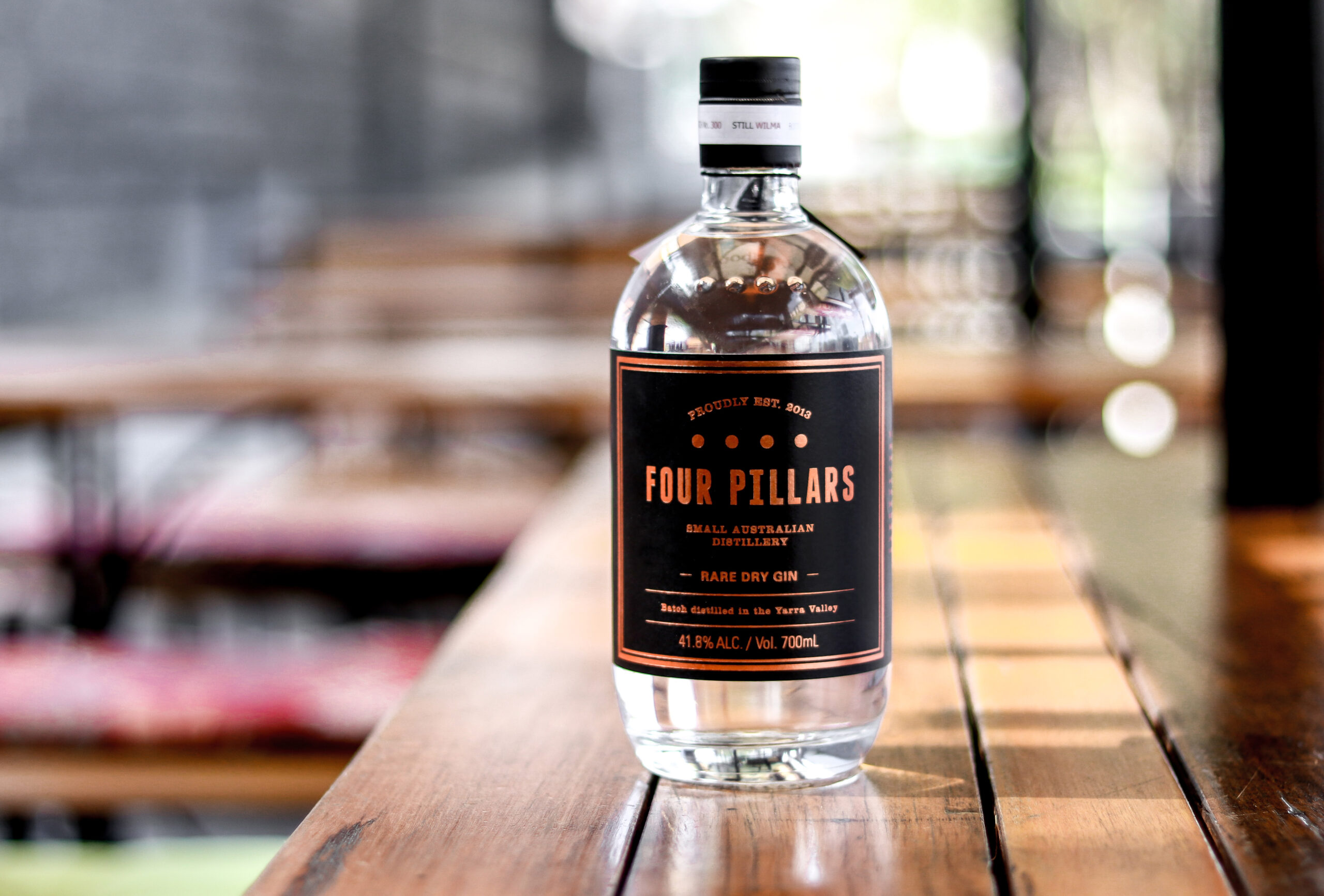
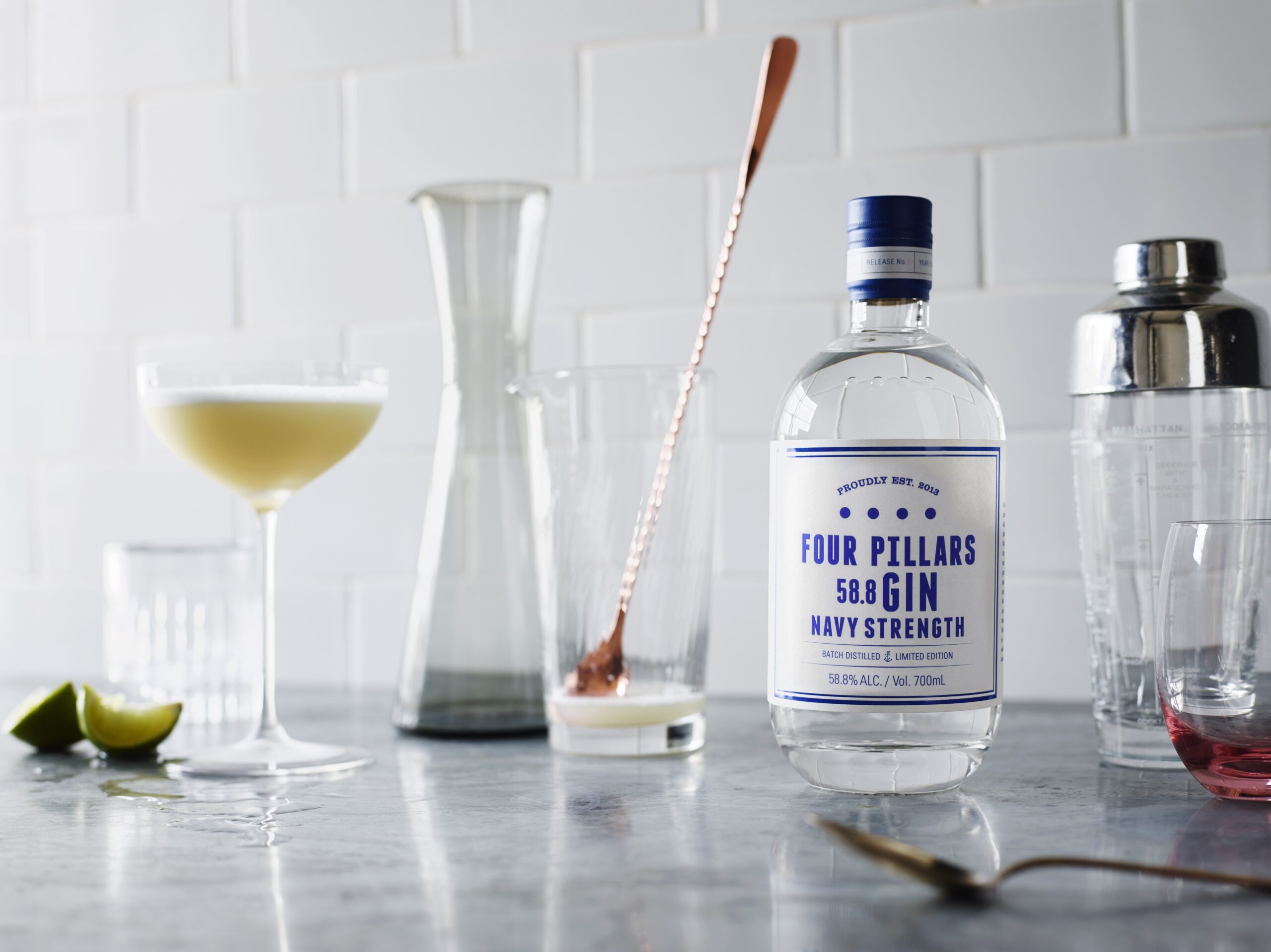
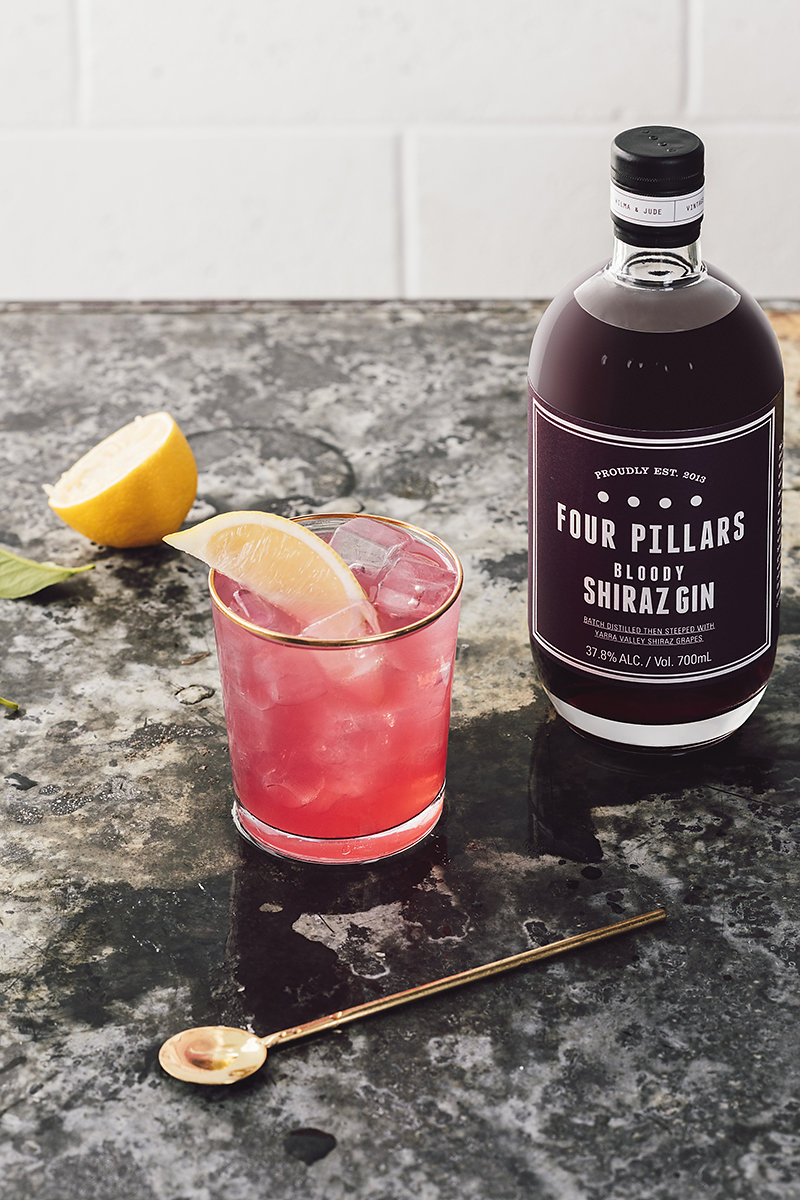

The sense of remaining true to the brand’s Australian roots was and remains a key tenet of production.
Gregor is passionate about this, saying: “The world doesn’t need another London dry gin, especially not one made by Aussies out of Melbourne. It should be different.
“People are coming to realise that gin can speak of a place more than most other spirits, except maybe tequila or Cognac as they are actual places. Your gin should taste of your place. It is adaptable, can represent a style in juniper but should taste not like a gin from California or London.
“Around the world you see winemakers trying to replicate Bordeaux or Burgundy; why don’t they make something that represents their own region? Don’t mimic what happens elsewhere. Yes you can have a framework that makes a wine a Pinot Noir, but let it express your place too. We love London dry gin, but this isn’t a replica.
“We use our own botanicals and fruits, sourced at home but also with some cascia from Asia, cardamom from Middle East, juniper from Europe. Quality is what matters. We’ve won double gold in the San Francisco World Spirits Competition three times in five years, and that has helped make some noise and to interest people.”

Building that awareness in Four Pillars’ home market was far from a certainty at the beginning. “In Australia people are beginning to drink gin but they still drink a lot more vodka,” says Gregor. “So what we produced with Rare Dry needed to be accessible to all, light, bright and from the best stills in the world. It’s a classic gin, not a flavoured vodka, and has a great taste of juniper – with strong hints of orange from the process. It’s essentially the gin that is turning Australians into gin drinkers.”
It was also a product that helped start the craft spirits revolution in Australia, although gin and other spirit makers are not incentivised (for example with lower taxes) in the same way that wine makers in the country are. That also means building the brand through channels such as travel retail is critical.

“Duty free is key,” says Gregor. “A litre at A$69 is flying off the shelves, outselling others that are cheaper in price. It’s a mark of quality and the reputation we have built to date.”
Rare Dry was around 80% of the business until Navy Strength (58%, with an unusual mix of Australian finger limes, ginger and other ingredients) caught fire in the local market and became what Gregor describes as a “juggernaut” of the business. Bloody Shiraz and Spiced Negroni have followed, each with their own story to tell.
Of Navy Strength, he says: “There was a local bar that wanted a stronger flavour, so we changed the botanical weight and made it very citrusy and very intense. It’s distinctive, and doesn’t taste like a drink that is nearly 60% alcohol. It shouldn’t be this drinkable but it is.”
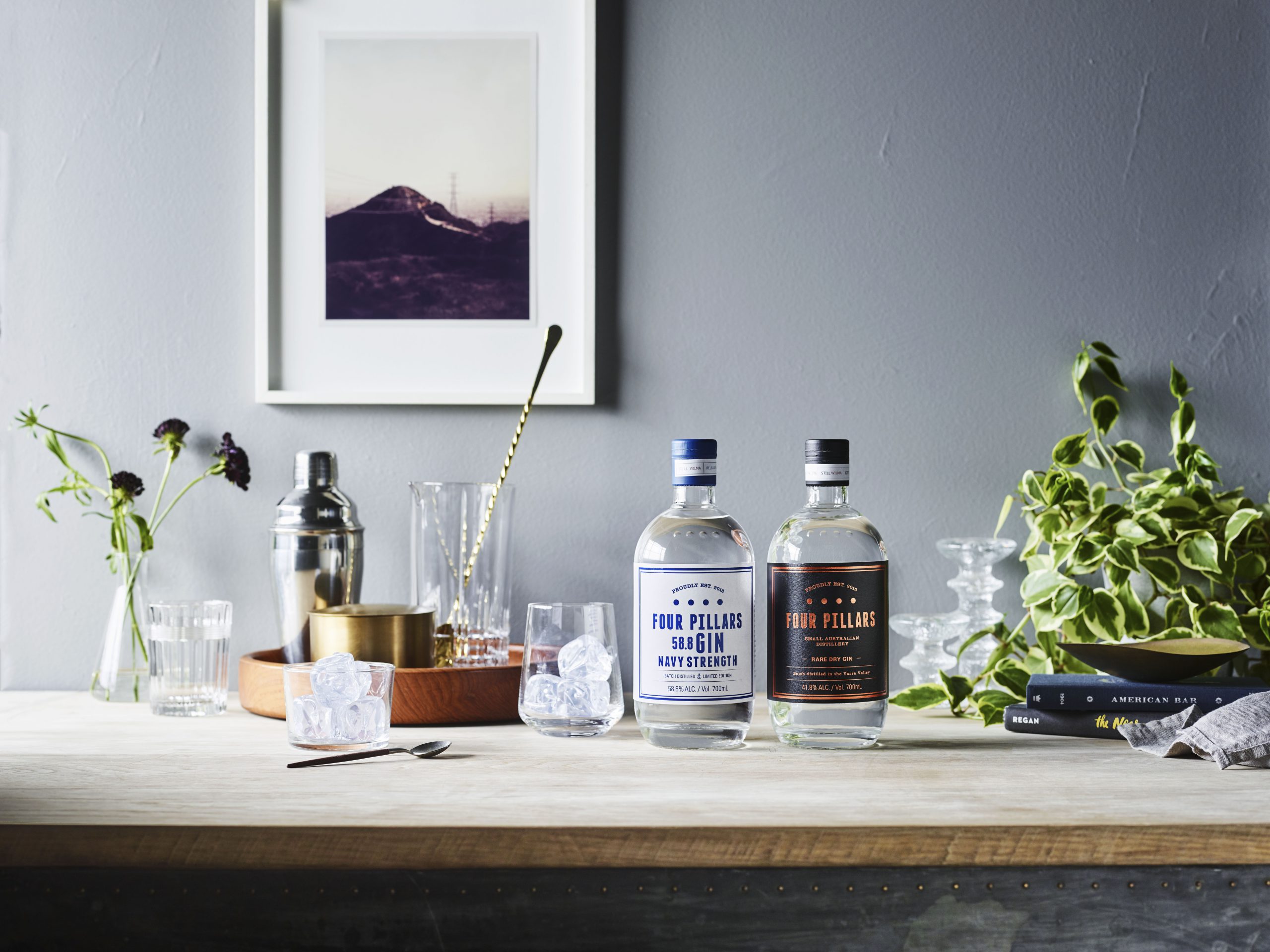
Bloody Shiraz has an even more quirky story behind it. In 2015 during the Yarra Valley vintage the partners say they were happily making gin out the back of friend Rob Dolan’s winery in Warrandyte, when a parcel of 250kg of Shiraz came to the winery from one of the region’s best vineyards. “Rob wasn’t sure what to do with it. Without following the complete protocol expected of a tenant in a mate’s winery, we ‘appropriated’ the Shiraz from Rob, firmly believing we were solving his problem.”
They had 250kg of Shiraz and it seemed clear, to Mackenzie at least, that they should steep the uncrushed shiraz berries in high-proof gin and see what might happen. It’s could be likened to the Australian version of a sloe gin, where sloe berries are steeped in the spirit.
“Gin is a super-fast growing category, craft in particular, and duty free stores want more interesting brands. You cannot any longer sell the same traditional brands, especially in gin, and get away with it.”
For eight weeks they left the whole berries in contact with high-proof Rare Dry, they watched the juice turn a purple colour and add the sweetness from the ripe grapes. How the spice and pepper of the Shiraz combined with the citrus and juniper notes of the gin they describe as “alcoholic alchemy”
Gregor says: “This is what changed everything for us and it’s where the wine background came in. We released it on World Gin Day with no label, no name, just as a bit of fun. My wife named it in fact. I was trying to think of a fancy name, maybe French, and she said ‘it’s just a bloody Shiraz gin, isn’t it?’ And there we had it. It’s essentially Shiraz grape juice and gin.
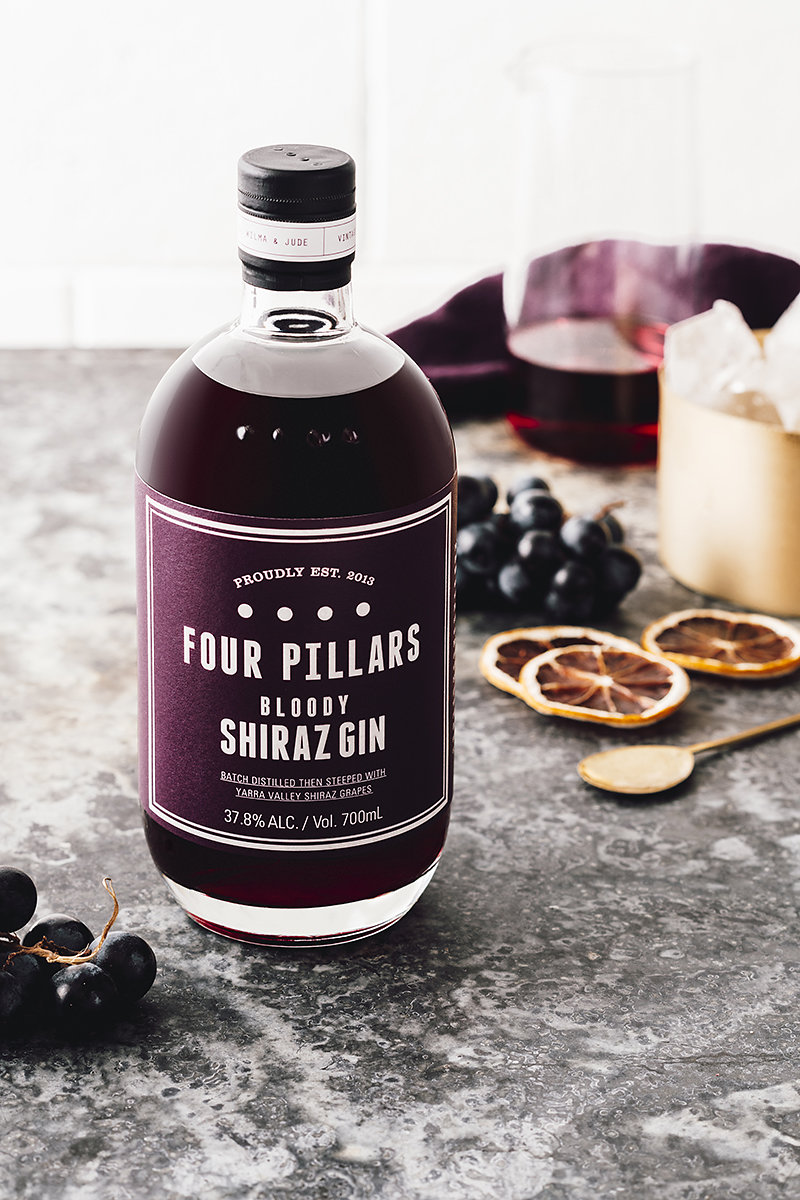
“We made a few thousand bottles in 2016, 30,000 in 2017, 80,000 last year, which sold out and is on allocation everywhere. We’ll make 100,000 this year. It was intended as a curio but has just soared from there. Who would have thought it? It’s in a category of one but I guarantee there will be others that follow us. We like it with lemon tonic so it’s tarty, and drink it as a gin and bitter lemon.”
No doubt other variants will emerge from the brand amid what Gregor calls the Australian ‘gin-aissance’ [the latter term widely used to describe the global trend for small-batch, locally-made craft gin -Ed]. For now, expansion overseas is a priority, with travel retail at its heart.
“We are figuring out how to replicate what we’ve done in travel retail in Australia and Asia and do that around the world, especially in Europe and Middle East. Gin is a super-fast growing category, craft in particular, and duty free stores want more interesting brands. You cannot any longer sell the same traditional brands, especially in gin, and get away with it.

“I’ve seen some great executions in gin at airports, through DFS at Changi for example, that would have been devoted to whisky in the past. We are there, as are other up and coming brands. But Europe will be key.
“We have done some great activations in Australia already and where we can, we love to use our oranges. Our own marmalade is part of the story; we’re making it as a by-product as we recycle, reuse and repurpose everything. So it’s perfect for store activations and as a talking point.
“As all this happens, travel retail will become even more important and could be 15-20% of the business compared to just under 10% now. Barry and his team will help us get there. Overall we are around 40,000 cases total but we could easily hit 100,000.
“We know duty free is an expensive channel but it’s about building awareness. We can be Australia’s leader in spirits, the first mover. For us that means when any airport in the world is asking for an Australian spirit to cover their portfolio, well, we can say it should be Four Pillars. We want to be the champion of Aussie spirits worldwide, planting that flag in travel retail.”



